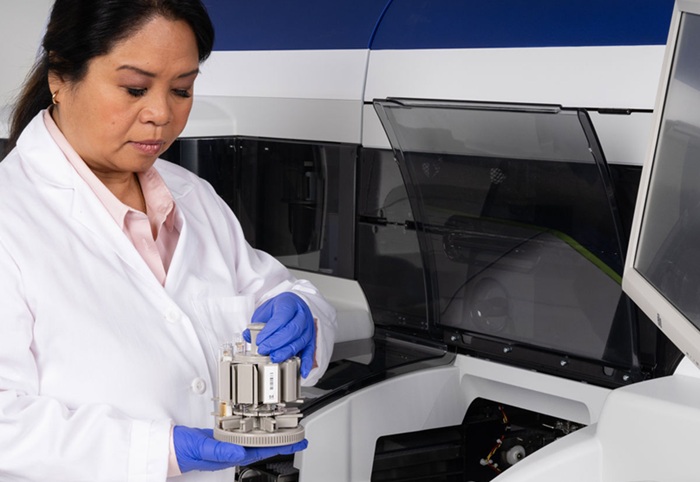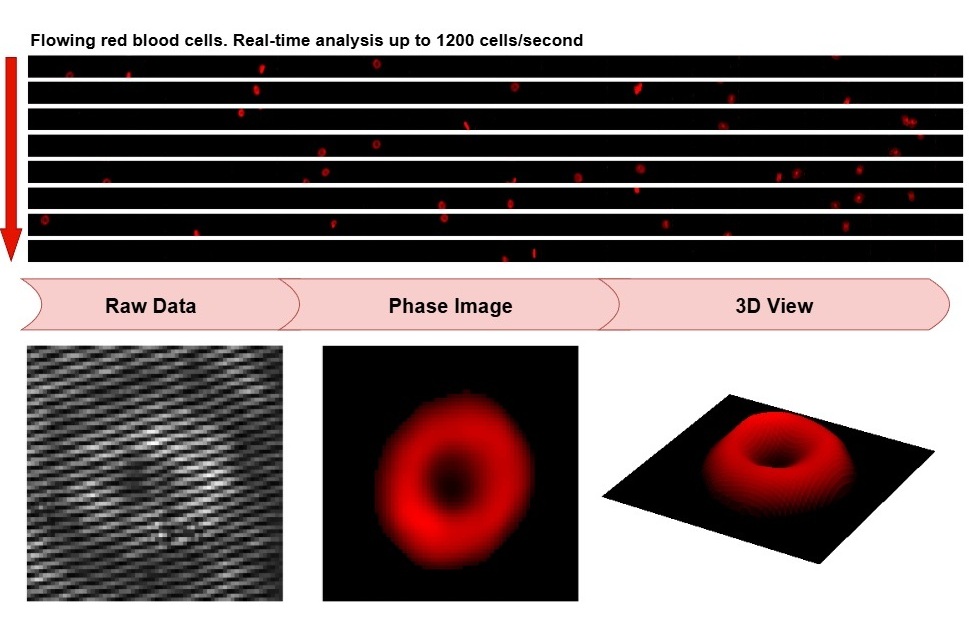Digital Pathology Solution Resolves the Tissue Floater Conundrum
|
By LabMedica International staff writers Posted on 30 Jul 2020 |
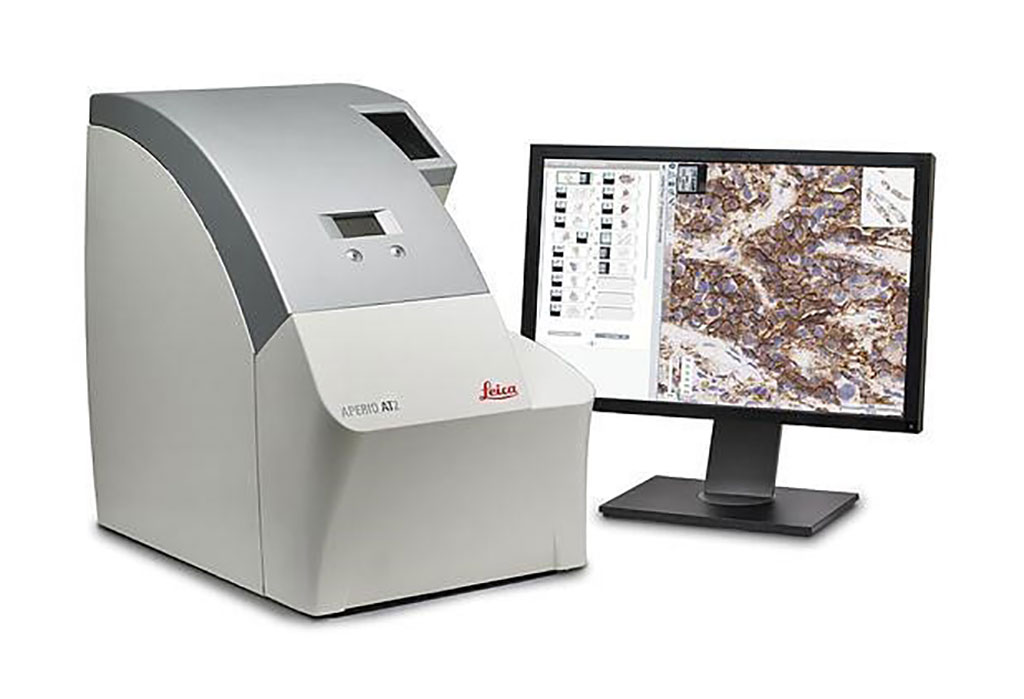
Image: The Aperio AT2 is the ideal digital pathology slide scanner for high-throughput clinical laboratories, delivering precise eSlides with low rescan rate (Photo courtesy of Leica Biosystems).
In routine clinical practice, pathologists may encounter extraneous pieces of tissue on glass slides that could be because of contamination from other specimens. These are typically called tissue floaters. The dilemma pathologists often face is whether such a tissue floater truly belongs to the case in question, or if instead it represents a true contaminant from another patient’s sample in which case it should be ignored.
There are currently several measures a pathologist can employ to troubleshoot the tissue floater problem. Akin to forensic analysis, some laboratories have implemented molecular techniques (e.g., DNA fingerprinting for tissue identity testing) to try resolve this problem by dissecting, testing, and then comparing the molecular results of the tissue floater to the adjacent patient sample on the glass slide.
Clinical Pathologists at the University of Michigan (Ann Arbor, MI, USA) and their colleagues demonstrated the feasibility of using an image search tool to resolve the tissue floater conundrum. A glass slide was produced containing two separate hematoxylin and eosin (H&E)-stained tissue floaters. This fabricated slide was digitized along with the two slides containing the original tumors used to create these floaters. These slides were then embedded into a dataset of 2,325 whole slide images comprising a wide variety of H&E stained diagnostic entities. Digital slides were broken up into patches and the patch features converted into barcodes for indexing and easy retrieval. A deep learning-based image search tool was employed to extract features from patches via barcodes, hence enabling image matching to each tissue floater.
All three slides were then entirely digitized at ×40 magnification using an Aperio AT2 whole slide scanner (Leica Biosystems, Richmond, IL, USA). The quality of these digital slides was checked to avoid inclusion of unique identifiers All the slides were then entirely digitized at ×40 magnification using an Aperio AT2 scanner. The quality of these digital slides was checked to avoid inclusion of unique identifiers. These whole slide images (WSIs) included cases from a wide variety of anatomic sites (e.g., colon, brain, thyroid, prostate, breast, kidney, salivary gland, skin, soft tissue, etc.) exhibiting varied diagnostic pathologic entities (i.e., reactive, inflammatory, benign neoplasms, and malignancies).
The scientists reported that there was a very high likelihood of finding a correct tumor match for the queried tissue floater when searching the digital database. Search results repeatedly yielded a correct match within the top three retrieved images. The retrieval accuracy improved when greater proportions of the floater were selected. The time to run a search was completed within several milliseconds. The image search results for matching tissue floaters when using the UPMC 300 WSI pilot dataset showed that the median rank best result for both the bladder and colon tumor was 1 (95% CI =1) when selecting 5% up to 100% of the floater region.
The authors concluded that using an image search tool offers pathologists an additional method to rapidly resolve the tissue floater conundrum, especially for those laboratories that have transitioned to going fully digital for primary diagnosis. The study was published on July 15, 2020 in the journal Archives of Pathology & Laboratory Medicine.
There are currently several measures a pathologist can employ to troubleshoot the tissue floater problem. Akin to forensic analysis, some laboratories have implemented molecular techniques (e.g., DNA fingerprinting for tissue identity testing) to try resolve this problem by dissecting, testing, and then comparing the molecular results of the tissue floater to the adjacent patient sample on the glass slide.
Clinical Pathologists at the University of Michigan (Ann Arbor, MI, USA) and their colleagues demonstrated the feasibility of using an image search tool to resolve the tissue floater conundrum. A glass slide was produced containing two separate hematoxylin and eosin (H&E)-stained tissue floaters. This fabricated slide was digitized along with the two slides containing the original tumors used to create these floaters. These slides were then embedded into a dataset of 2,325 whole slide images comprising a wide variety of H&E stained diagnostic entities. Digital slides were broken up into patches and the patch features converted into barcodes for indexing and easy retrieval. A deep learning-based image search tool was employed to extract features from patches via barcodes, hence enabling image matching to each tissue floater.
All three slides were then entirely digitized at ×40 magnification using an Aperio AT2 whole slide scanner (Leica Biosystems, Richmond, IL, USA). The quality of these digital slides was checked to avoid inclusion of unique identifiers All the slides were then entirely digitized at ×40 magnification using an Aperio AT2 scanner. The quality of these digital slides was checked to avoid inclusion of unique identifiers. These whole slide images (WSIs) included cases from a wide variety of anatomic sites (e.g., colon, brain, thyroid, prostate, breast, kidney, salivary gland, skin, soft tissue, etc.) exhibiting varied diagnostic pathologic entities (i.e., reactive, inflammatory, benign neoplasms, and malignancies).
The scientists reported that there was a very high likelihood of finding a correct tumor match for the queried tissue floater when searching the digital database. Search results repeatedly yielded a correct match within the top three retrieved images. The retrieval accuracy improved when greater proportions of the floater were selected. The time to run a search was completed within several milliseconds. The image search results for matching tissue floaters when using the UPMC 300 WSI pilot dataset showed that the median rank best result for both the bladder and colon tumor was 1 (95% CI =1) when selecting 5% up to 100% of the floater region.
The authors concluded that using an image search tool offers pathologists an additional method to rapidly resolve the tissue floater conundrum, especially for those laboratories that have transitioned to going fully digital for primary diagnosis. The study was published on July 15, 2020 in the journal Archives of Pathology & Laboratory Medicine.
Latest Pathology News
- AI Tool Improves Accuracy of Skin Cancer Detection
- Highly Sensitive Imaging Technique Detects Myelin Damage
- 3D Genome Mapping Tool to Improve Diagnosis and Treatment of Genetic Diseases
- New Molecular Analysis Tool to Improve Disease Diagnosis
- Tears Offer Noninvasive Alternative for Diagnosing Neurodegenerative Diseases
- AI-Powered Method Combines Blood Data to Accurately Measure Biological Age
- AI Tool Detects Cancer in Blood Samples In 10 Minutes
- AI Pathology Analysis System Delivers Comprehensive Cancer Diagnosis
- AI Improves Cervical Cancer Screening in Low-Resource Settings
- New Multi-Omics Tool Illuminates Cancer Progression
- New Technique Detects Genetic Mutations in Brain Tumors During Surgery within 25 Minutes
- New Imaging Tech to Improve Diagnosis and Treatment of Skin Cancers
- Serially Testing Brain Tumor Samples Reveals Treatment Response in Glioblastoma Patients
- High-Accuracy Tumor Detection Method Offers Real-Time Surgical Guidance
- AI Tool Detects Hidden Warning Signs of Disease Inside Single Cells
- Automated Tool Detects Early Warning Signs of Breast Cancer
Channels
Clinical Chemistry
view channel
VOCs Show Promise for Early Multi-Cancer Detection
Early cancer detection is critical to improving survival rates, but most current screening methods focus on individual cancer types and often involve invasive procedures. This makes it difficult to identify... Read more
Portable Raman Spectroscopy Offers Cost-Effective Kidney Disease Diagnosis at POC
Kidney disease is typically diagnosed through blood or urine tests, often when patients present with symptoms such as blood in urine, shortness of breath, or weight loss. While these tests are common,... Read moreMolecular Diagnostics
view channel
New Biomarker Panel to Improve Heart Failure Diagnosis in Women
Heart failure affects millions worldwide, yet many women are still misdiagnosed or diagnosed too late. Although heart failure broadly means the heart cannot pump enough blood to the body’s cells, its two... Read more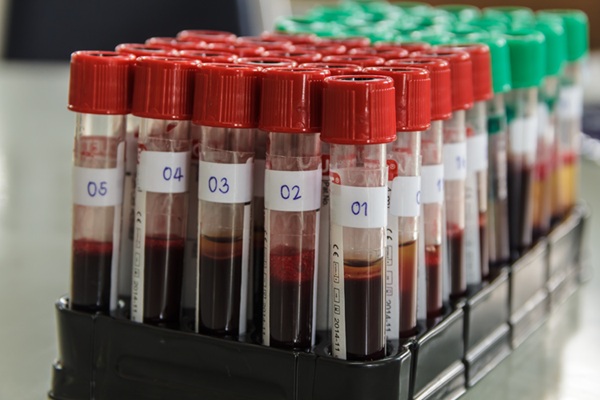
Dual Blood Biomarkers Improve ALS Diagnostic Accuracy
Diagnosing amyotrophic lateral sclerosis (ALS) remains difficult even with advanced imaging and genetic tools, especially when clinicians must distinguish it from other neurodegenerative conditions that... Read moreHematology
view channel
ADLM’s New Coagulation Testing Guidance to Improve Care for Patients on Blood Thinners
Direct oral anticoagulants (DOACs) are one of the most common types of blood thinners. Patients take them to prevent a host of complications that could arise from blood clotting, including stroke, deep... Read more
Viscoelastic Testing Could Improve Treatment of Maternal Hemorrhage
Postpartum hemorrhage, severe bleeding after childbirth, remains one of the leading causes of maternal mortality worldwide, yet many of these deaths are preventable. Standard care can be hindered by delays... Read more
Pioneering Model Measures Radiation Exposure in Blood for Precise Cancer Treatments
Scientists have long focused on protecting organs near tumors during radiotherapy, but blood — a vital, circulating tissue — has largely been excluded from dose calculations. Each blood cell passing through... Read moreImmunology
view channel
Chip Captures Cancer Cells from Blood to Help Select Right Breast Cancer Treatment
Ductal carcinoma in situ (DCIS) accounts for about a quarter of all breast cancer cases and generally carries a good prognosis. This non-invasive form of the disease may or may not become life-threatening.... Read more
Blood-Based Liquid Biopsy Model Analyzes Immunotherapy Effectiveness
Immunotherapy has revolutionized cancer care by harnessing the immune system to fight tumors, yet predicting who will benefit remains a major challenge. Many patients undergo costly and taxing treatment... Read moreMicrobiology
view channel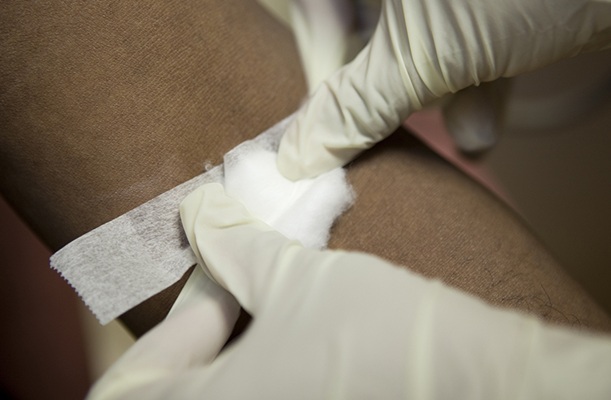
15-Minute Blood Test Diagnoses Life-Threatening Infections in Children
Distinguishing minor childhood illnesses from potentially life-threatening infections such as sepsis or meningitis remains a major challenge in emergency care. Traditional tests can take hours, leaving... Read more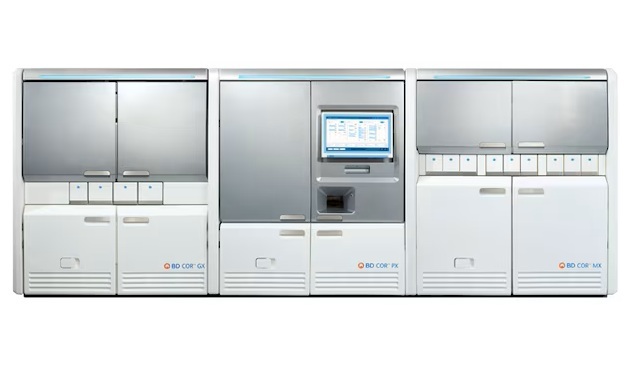
High-Throughput Enteric Panels Detect Multiple GI Bacterial Infections from Single Stool Swab Sample
Gastrointestinal (GI) infections are among the most common causes of illness worldwide, leading to over 1.7 million deaths annually and placing a heavy burden on healthcare systems. Conventional diagnostic... Read moreTechnology
view channel
AI Model Achieves Breakthrough Accuracy in Ovarian Cancer Detection
Early diagnosis of ovarian cancer remains one of the toughest challenges in women’s health. Traditional tools such as the Risk of Ovarian Malignancy Algorithm (ROMA) can struggle to distinguish between... Read more
Portable Biosensor Diagnoses Psychiatric Disorders Using Saliva Samples
Early diagnosis of psychiatric disorders such as depression, schizophrenia, and bipolar disorder remains one of medicine’s most pressing challenges. Current diagnostic methods rely heavily on clinical... Read more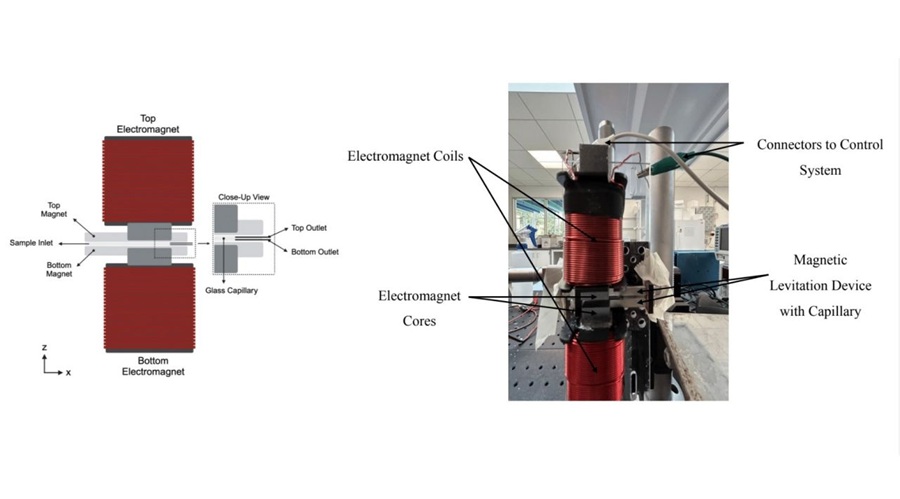
Cell-Sorting Device Uses Electromagnetic Levitation to Precisely Direct Cell Movement
Sorting different cell types—such as cancerous versus healthy or live versus dead cells—is a critical task in biology and medicine. However, conventional methods often require labeling, chemical exposure,... Read moreIndustry
view channel
Co-Diagnostics Forms New Business Unit to Develop AI-Powered Diagnostics
Co-Diagnostics, Inc. (Salt Lake City, UT, USA) has formed a new artificial intelligence (AI) business unit to integrate the company's existing and planned AI applications into its Co-Dx Primer Ai platform.... Read more









 assay.jpg)




